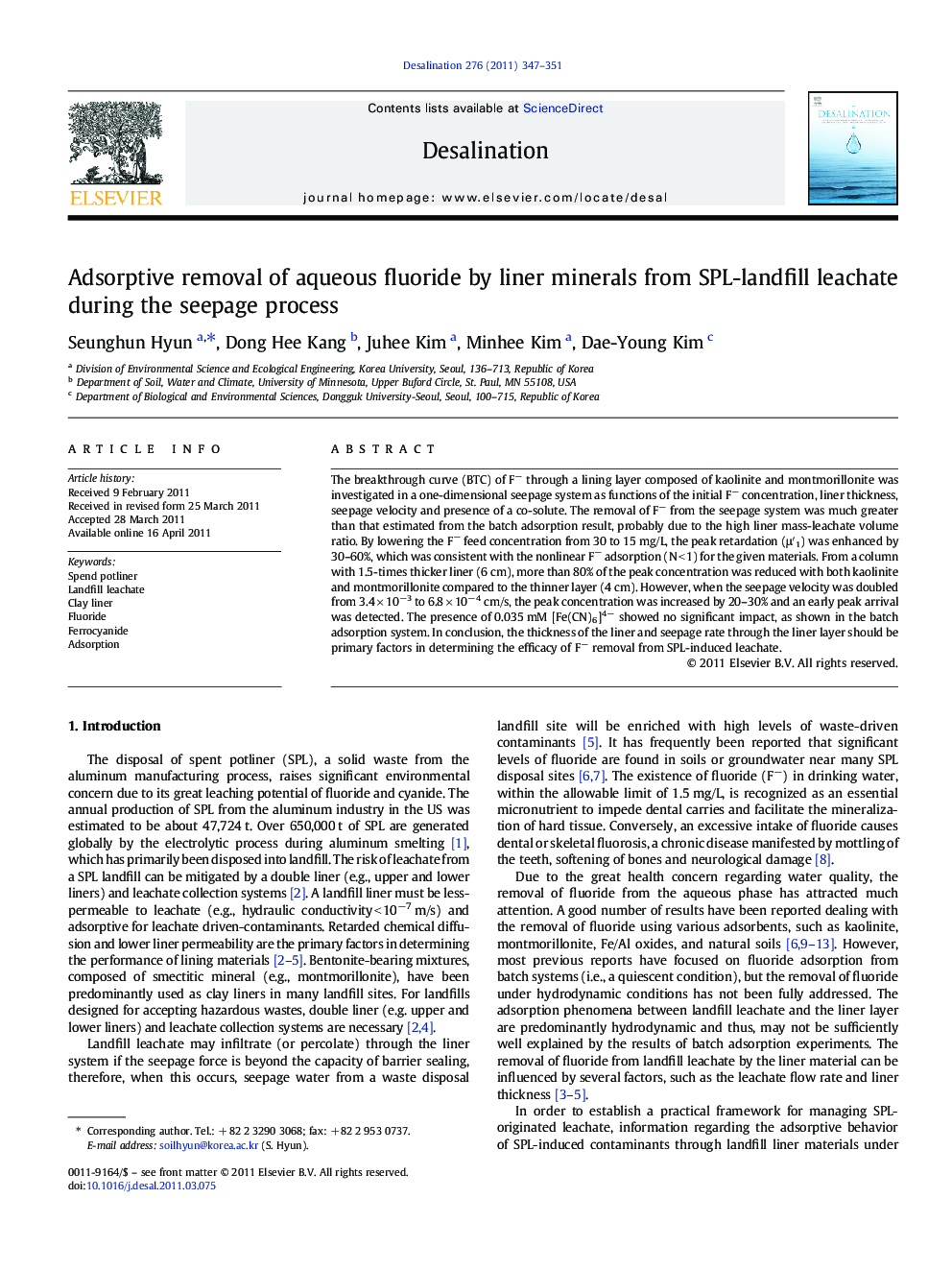| Article ID | Journal | Published Year | Pages | File Type |
|---|---|---|---|---|
| 624865 | Desalination | 2011 | 5 Pages |
The breakthrough curve (BTC) of F− through a lining layer composed of kaolinite and montmorillonite was investigated in a one-dimensional seepage system as functions of the initial F− concentration, liner thickness, seepage velocity and presence of a co-solute. The removal of F− from the seepage system was much greater than that estimated from the batch adsorption result, probably due to the high liner mass-leachate volume ratio. By lowering the F− feed concentration from 30 to 15 mg/L, the peak retardation (μ′1) was enhanced by 30–60%, which was consistent with the nonlinear F− adsorption (N < 1) for the given materials. From a column with 1.5-times thicker liner (6 cm), more than 80% of the peak concentration was reduced with both kaolinite and montmorillonite compared to the thinner layer (4 cm). However, when the seepage velocity was doubled from 3.4 × 10−3 to 6.8 × 10−4 cm/s, the peak concentration was increased by 20–30% and an early peak arrival was detected. The presence of 0.035 mM [Fe(CN)6]4− showed no significant impact, as shown in the batch adsorption system. In conclusion, the thickness of the liner and seepage rate through the liner layer should be primary factors in determining the efficacy of F− removal from SPL-induced leachate.
Graphical abstractThe thickness of the liner and seepage rate through the liner layer are primary factors in determining the efficacy of F− removal.Figure optionsDownload full-size imageDownload as PowerPoint slideResearch highlights► The F removal from the seepage system was much greater than the batch capacity. ► The F removal during seepage was found as retention time-dependent interaction. ► The liner thickness and seepage rate dominantly determines the F removal capacity. ► In designing a SPL landfill, the liner thickness should be optimized foremost.
